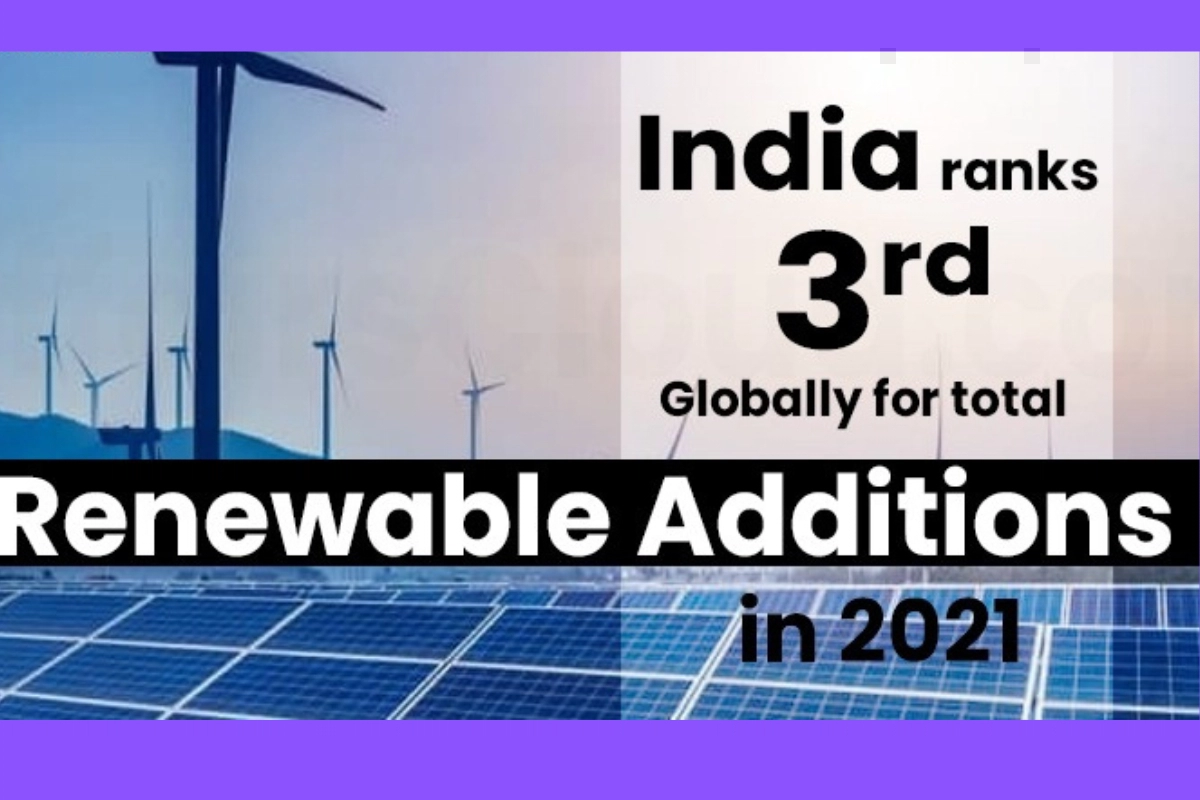Green Energy Initiatives: India ranks 4th in the world in terms of installed renewable energy capacity and India’s non-fossil fuel energy has grown by over 25% in the previous 7 years.
India’s energy demand is expected to increase more than that of any other country in the coming decades due to its sheer size and enormous potential for growth and development. Therefore, most of this new energy demand must be met by low-carbon, renewable sources. India’s announcement India that it intends to achieve net zero carbon emissions by 2070 and to meet 50% of its electricity needs from renewable sources by 2030 marks a historic point in the global effort to combat climate change.
Ambitious initiatives by Govt. of India
The robust demand is adequately pushed forward by the Government with its focused and determined initiatives. With the increased support of the Government and improved economics, the sector has become attractive from an investor’s perspective. As India looks to meet its energy demand on its own, its booming renewable sector is projected to add 35 to 40 gigawatts annually by 2030, enough to power up 30 million homes each year. It is further expected to reach 15,820 TWh by 2040, and so India’s renewable energy initiatives are all set to play an important role in the country and the globe as well, especially in the field of Green Energy and Carbon Reduction action-plans.
India’s proactive efforts acclaimed globally
Of late India’s proactive initiatives are getting widespread global acclamation. Recently ‘The Institute for Energy Economics and Financial Analysis and Climate Energy Finance’ estimated that India, the third largest energy-consuming country in the world, will reach 405 gigawatts of renewable energy capacity by 2030. It’s expected to surpass the government’s target of producing 50% of its electricity from non-fossil fuel sources by the end of the decade. Currently, fossil fuels account for 59% of India’s installed energy capacity but are expected to make up just 31.6% of the energy mix by 2030.
Vibhuti Garg, a senior specialist at IEEFA claimed “India is energy hungry and this hunger will only increase with our economic growth” She added that the low cost of renewables as well as the need for cleaner energy sources to curb climate change have driven the growth of the sector in the country, which is the world’s third largest renewable energy market.
No other country’s energy needs are expected to balloon as much as India’s in the coming years, as living standards improve and its 1.3 billion population grows.
Commendable Private Sector initiatives
It is also worthwhile to mention that data analyzed from various green energy corporations and publicly funded energy companies, also found that 151 gigawatts of renewable energy will be added by private clean energy companies alone. Adani Green Energy, a private company, will account for the largest single addition, going from 5.8 gigawatts to 45 gigawatts of renewable energy production.
$223 billion required to get rid of coal energy
Although the country has made significant strides in clean energy, experts say there is still room for improvement. India’s ambitious renewable policies haven’t been able to halt the country’s coal pipeline. But shutting down coal and moving towards greener energy needs huge financing. Recent estimates say India will require around $223 billion of investment to meet its 2030 energy.
Roof-Top Solar Energy requires hard-push
Besides, roof-top solar energy which is lacking far behind other avenues with an installed capacity of just 7.5 gigawatts, has to go a long way ahead for achieving its planned target of 40 gigawatts by the end of the year. The challenge or the biggest impediment remains the diverse rooftop policies adhered to by various states. The country as a whole should have a holistic policy to achieve desirable growth in this sector.
INVESTMENTS/ DEVELOPMENTS
According to the data released by the Department for Promotion of Industry and Internal Trade (DPIIT), FDI inflow in the Indian non-conventional energy sector stood at US$ 11.62 billion between April 2000-March 2022. More than Rs. 5.2 lakh crore (US$ 70 billion) has been invested in India’s renewable energy sector since 2014. According to the analytics firm British Business Energy, India ranked 3rd globally in terms of its renewable energy investments and plans in 2020.
Some major investments and developments in the Indian renewable energy sector are as follows:
- In August 2022, Norfund, who manage the Norwegian Climate Investment Fund, and KLP, Norway’s biggest pension company, signed an agreement to buy a 49% share of a 420 MW solar power plant in Rajasthan for Rs. 2.8 billion (US$ 35.05 million).
- India has generated 47.64 BU of solar power in the first half of 2022, a 34% increase.
- Investment in renewable energy in India reached a record US$ 14.5 billion in FY22, an increase of 125% over FY21.
- Delhi’s Indira Gandhi International Airport (IGIA) has become the first Indian airport to run entirely on hydro and solar power. Around 6% of the airport’s electricity requirement is met from the onsite solar power plants.
- Ayana Renewable Power Pvt Ltd (Ayana) announced plans to set up renewable energy projects totalling 2 gigawatts (GWs) with an investment of Rs. 12,000 crores (US$ 1.53 billion) in Karnataka.
- India ranked third on the EY Renewable Energy Country Attractive Index 2021.
- In February 2022, Creduce Technologies-HCPL JV announced winning the bid for India’s single largest hydropower carbon credits project with Satluj Jal Vidyut Nigam, which will create more than 80 million carbon credits.
- In February 2022, Husk Power Systems, a renewable energy company working towards rural electrification, secured a US$ 4.2 million loan from the Indian Renewable Energy Development Agency (IREDA).
- In December 2021, India’s largest energy provider, Tata Power, was awarded a contract by the Maharashtra State Electricity Distribution Company Limited (MSEDCL) to set up a 300 MW wind-solar hybrid power plant.
- In October 2021, Reliance New Energy Solar Ltd. (RNESL) announced two acquisitions to build more capabilities. Both acquisitions – REC Solar Holdings AS (REC Group), a Norway-based firm, and Sterling & Wilson Solar, based in India – exceeded US$ 1 billion and are expected to contribute to Reliance’s target of achieving the capacity of 100 GW of solar energy at Jamnagar by 2030.
- In October 2021, Adani Green Energy Ltd. (AGEL) acquired SB Energy India for US$ 3.5 billion to strengthen its position in the renewable energy sector in India.
- In August 2021, Copenhagen Infrastructure Partners (CIP) signed an investment agreement with Amp Energy India Private Limited to facilitate joint equity investments of US$ 200 million across Indian renewable energy projects.
- In July 2021, National Thermal Power Corporation Renewable Energy Ltd. (NTPC REL), NTPC’s fully-owned subsidiary, sent out a tender to domestic manufacturers to build India’s first green hydrogen fueling station in Leh, Ladakh.
- The NTPC is expected to commission India’s largest floating solar power plant in Ramagundam, Telangana by May-June 2022. The expected total installed capacity is 447MW.
- The Solar Energy Corporation of India (SECI) implemented large-scale central auctions for solar parks and has awarded contracts for 47 parks with over 25 GW of combined capacity.
Keep watching our YouTube Channel ‘DNP INDIA’. Also, please subscribe and follow us on FACEBOOK, INSTAGRAM, and TWITTER.












